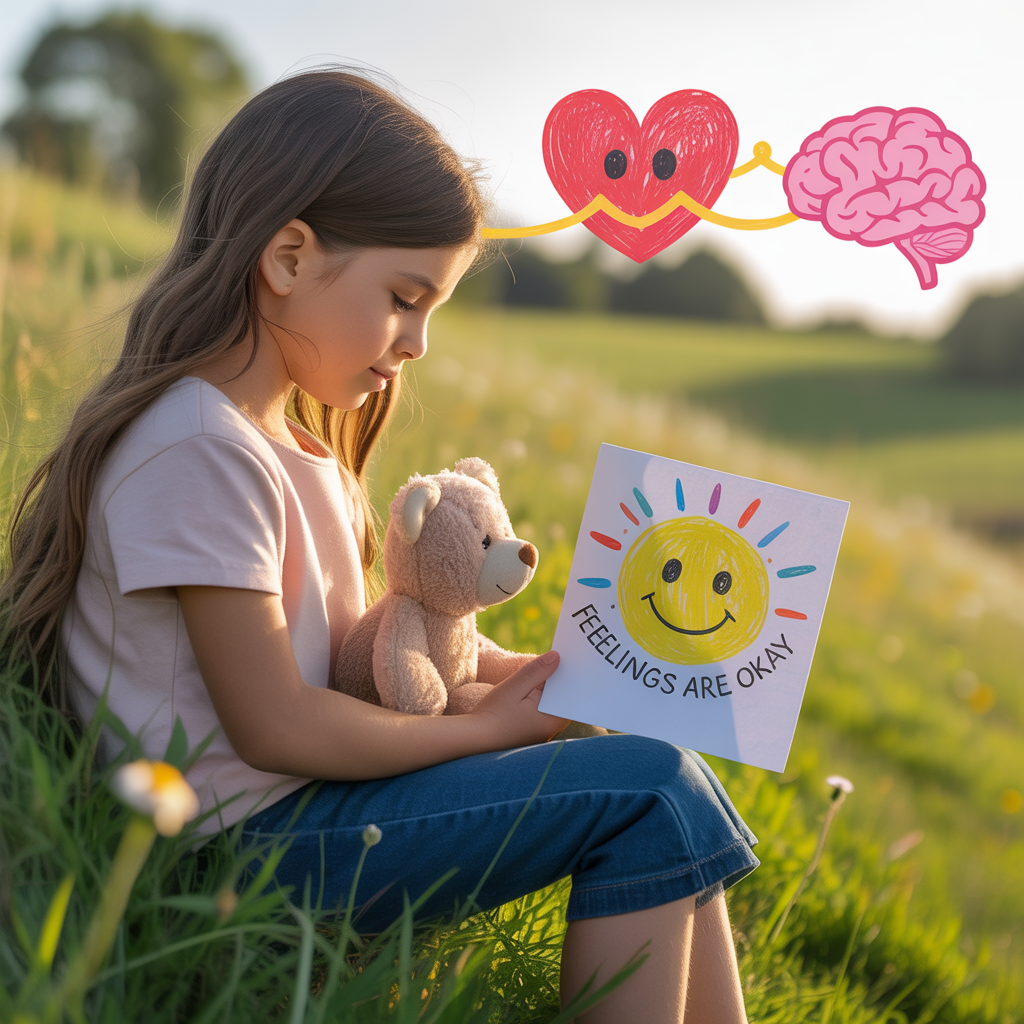Children feel deeply. From giggles to grief, from excitement to frustration, emotions are a huge part of their daily experience. But unlike adults, children are still learning how to identify, understand, and express what they feel. That’s where you come in.
Teaching kids to express emotions in healthy ways helps them:
- Build stronger relationships
- Develop emotional intelligence
- Prevent behavioral outbursts
- Feel more confident and secure
In this article, you’ll learn practical strategies to help your child navigate their emotions with honesty, safety, and respect.
1. Start by Normalizing All Emotions
Let your child know that every emotion is valid—even the big, uncomfortable ones.
Say things like:
- “It’s okay to feel angry.”
- “Everyone gets sad sometimes.”
- “You’re allowed to be frustrated.”
Avoid phrases like:
- “Stop crying, it’s not a big deal.”
- “There’s no reason to be scared.”
- “Be happy—there’s nothing to be upset about.”
Children learn emotional confidence when they feel safe being real.
2. Help Them Name Their Feelings
Emotional expression starts with emotional vocabulary. The earlier children can name what they’re feeling, the better they can manage it.
Use emotion words often in daily life:
- “You seem excited about the birthday party!”
- “You look disappointed that the game ended.”
- “Are you feeling nervous before school today?”
You can also use:
- Emotion flashcards
- “Feelings check-in” boards
- Books about emotions
- Mirror time: “Show me a happy face, now a sad face.”
3. Model Healthy Expression Yourself
Your child learns most by watching you. Show them how you handle your own feelings in healthy ways.
Examples:
- “I’m feeling overwhelmed, so I’m going to take some deep breaths.”
- “I got frustrated earlier, but I talked it out and felt better.”
- “I was really excited to see my friend today!”
Don’t be afraid to be honest. Children need to see that adults have feelings too—and know how to handle them.
4. Create a Safe Emotional Environment
Children are more likely to express themselves when they feel safe from:
- Judgment
- Punishment
- Shame
When your child shares a strong emotion, respond with:
- Calm listening
- Gentle eye contact
- Open body language
You can say:
- “Thank you for telling me how you feel.”
- “I’m glad you shared that with me.”
- “Let’s figure this out together.”
5. Use Visual Tools to Support Expression
Sometimes words are hard—especially for toddlers or neurodivergent children. Visuals can help.
Try:
- Emotion charts
- “Feelings faces” posters
- Choice cards: “Do you feel angry, sad, or tired?”
- Drawing what they feel
- Making a “feelings wheel”
These tools allow expression without pressure.
6. Offer Healthy Coping Strategies
Teach your child what they can do when they feel strong emotions. Make a list together and practice often.
Examples:
- Deep breathing (smell the flower, blow the candle)
- Drawing or coloring
- Squeezing a pillow
- Talking to a trusted adult
- Using words like “I feel… because…”
You can also create a calm-down kit with tools they can use independently.
7. Encourage Verbal Expression Through Play
Play is a child’s natural language. Use it to encourage emotional expression.
Ideas:
- Puppet shows about feelings
- Role-playing with toys
- Storytelling: “What did the dragon feel when he lost his crown?”
- Games where characters talk about what they feel
This builds emotional fluency without pressure.
8. Stay Present During Emotional Outbursts
Sometimes children express feelings through yelling, crying, or throwing. Your job isn’t to shut it down—but to guide them through it.
- Stay close and calm
- Avoid yelling back
- Validate the emotion
- Set safe boundaries: “It’s okay to be mad, but not okay to throw.”
Once calm, talk about better ways to express that feeling next time.
9. Revisit and Reflect
When emotions settle, revisit the situation with curiosity, not criticism.
Ask:
- “What were you feeling earlier?”
- “What helped you calm down?”
- “What could we try next time?”
This teaches emotional reflection—a skill they’ll carry for life.
10. Praise Honest Expression
Celebrate when your child expresses themselves in a healthy way.
- “You told me you were sad instead of yelling. That was really mature.”
- “I saw how you talked about your anger without hitting. That was respectful.”
- “You used your words instead of tears. I’m proud of how you handled that.”
Positive reinforcement helps them choose healthy expression again and again.
Final Thought: Teach Them to Feel, Not Just to Behave
Helping your child express emotions isn’t about making them quieter—it’s about helping them become more emotionally intelligent, honest, and connected.
Every time you make space for their feelings, guide them gently, and stay present in the chaos, you’re building a strong foundation—for mental health, relationships, and resilience.
Let them feel. Let them speak. Let them grow.
